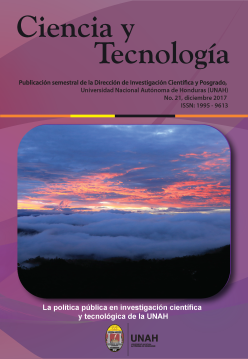The sequential model in the analysis of public policies: the case of public policy in scientific and technological research of the UNAH
DOI:
https://doi.org/10.5377/rct.v0i20.5919Keywords:
Public policy, sequencial modelAbstract
Although, it is contemplated in the analysis that the public policy in scientific research of the UNAH has had an implementation without shocks (only those that occurred in the country, such as the coup d'état in 2009 and the financial crisis in 2008) that could have repercussions on aggressive public policy changes, divergent promoting coalitions in the implementation, or financing problems because their source is coming from the public treasury, that affirms that said public policy enjoys a commitment of all the members of the university community. The legitimacy of the government of the system is considerable, since members of the same system are those who form it and have the statutory attributions for the construction and modification of public policy, this is a strength, despite the fact that the stage of policy formulation public and alternative solutions to the public problem were built at a time of great conflict and not in the best conditions of the context, because the mandate period of the Transitional Commission was moderately short. Although the tasks entrusted by the Transition Commission, proposed in 2005 in the General Plan of the Comprehensive Reform of the UNAH, were not completed, policy actions aimed at such products were developed, seeking their sustainability.
Downloads
908
Downloads
Published
How to Cite
Issue
Section
License
© Revista Ciencia y Tecnología
Authors who publish in this journal accept the following conditions: In accordance with the legislation of copyright, Revista Ciencia y Tecnología, recognizes and respects the moral right of authors, as well as the ownership of the patrimonial right, which will be ceded to the magazine for its diffusion in open access in printed version and in digital format. By being part of multiple indexers, databases and reference systems, the articles published by Revista Ciencia y Tecnología will be visible and will be downloaded from these websites, indicating, in all cases, the authorship of the articles, the date of publication and the number of the journal to which they correspond.




